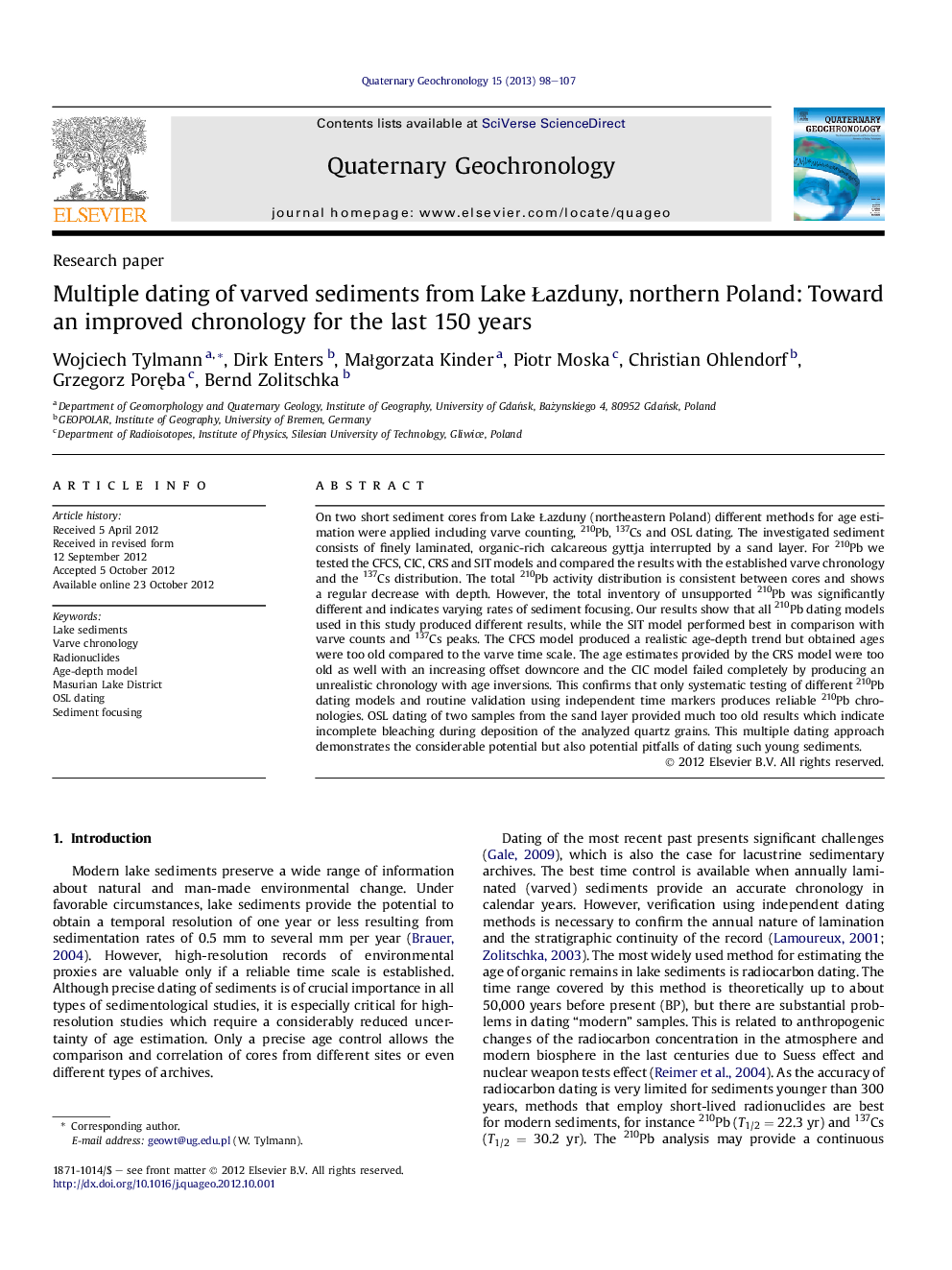| کد مقاله | کد نشریه | سال انتشار | مقاله انگلیسی | نسخه تمام متن |
|---|---|---|---|---|
| 4725075 | 1639861 | 2013 | 10 صفحه PDF | دانلود رایگان |

On two short sediment cores from Lake Łazduny (northeastern Poland) different methods for age estimation were applied including varve counting, 210Pb, 137Cs and OSL dating. The investigated sediment consists of finely laminated, organic-rich calcareous gyttja interrupted by a sand layer. For 210Pb we tested the CFCS, CIC, CRS and SIT models and compared the results with the established varve chronology and the 137Cs distribution. The total 210Pb activity distribution is consistent between cores and shows a regular decrease with depth. However, the total inventory of unsupported 210Pb was significantly different and indicates varying rates of sediment focusing. Our results show that all 210Pb dating models used in this study produced different results, while the SIT model performed best in comparison with varve counts and 137Cs peaks. The CFCS model produced a realistic age-depth trend but obtained ages were too old compared to the varve time scale. The age estimates provided by the CRS model were too old as well with an increasing offset downcore and the CIC model failed completely by producing an unrealistic chronology with age inversions. This confirms that only systematic testing of different 210Pb dating models and routine validation using independent time markers produces reliable 210Pb chronologies. OSL dating of two samples from the sand layer provided much too old results which indicate incomplete bleaching during deposition of the analyzed quartz grains. This multiple dating approach demonstrates the considerable potential but also potential pitfalls of dating such young sediments.
► We investigate two varved sediment cores from Lake Łazduny in northeastern Poland.
► We compare results of four dating methods: varve counting, 210Pb, 137Cs and OSL.
► We test different models for 210Pb dating: CFCS, CIC, CRS, SIT.
► The SIT model produce best results in comparison with varve counts and 137Cs peaks.
Journal: Quaternary Geochronology - Volume 15, February 2013, Pages 98–107